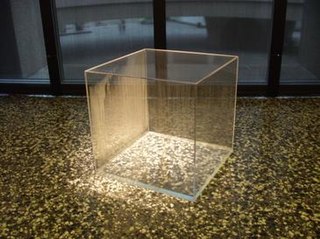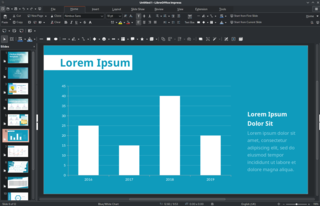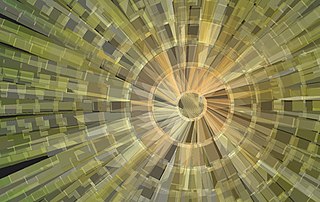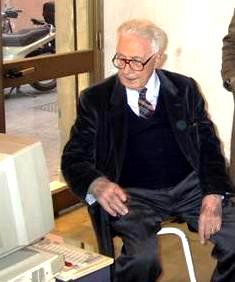
MIDI Maze, also known as Faceball 2000, is a networked first-person shooter maze game for the Atari ST developed by Xanth Software F/X and released in 1987 by Hybrid Arts. The game takes place in a maze of untextured walls. The world animates smoothly as the player turns, much like the earlier Wayout, instead of only permitting 90 degree changes of direction. Using the MIDI ports on the Atari ST, the game is said to have introduced deathmatch combat to gaming in 1987. It also predated the LAN party concept by several years. The game found a wider audience when it was converted to Faceball 2000 on the Game Boy.

The Atari 8-bit computers, formally launched as the Atari Home Computer System, are a series of 8-bit home computers introduced by Atari, Inc. in 1979 with the Atari 400 and Atari 800. It is the first home computer architecture with coprocessors, enabling more advanced graphics and sound than most of its contemporaries. Video games are key to its software library, and the 1980 first-person space combat simulator Star Raiders is considered the platform's killer app.

Digital art refers to any artistic work or practice that uses digital technology as part of the creative or presentation process. It can also refer to computational art that uses and engages with digital media.

Marble Madness is an arcade video game designed by Mark Cerny and published by Atari Games in 1984. It is a platform game in which the player must guide a marble through six courses, populated with obstacles and enemies, within a time limit. The player controls the marble by using a trackball. Marble Madness is known for using innovative game technologies: it was Atari's first to use the Atari System 1 hardware, the first to be programmed in the C programming language, and one of the first to use true stereo sound.

Generative art is art that in whole or in part has been created with the use of an autonomous system. An autonomous system in this context is generally one that is non-human and can independently determine features of an artwork that would otherwise require decisions made directly by the artist. In some cases the human creator may claim that the generative system represents their own artistic idea, and in others that the system takes on the role of the creator.

Deluxe Paint, often referred to as DPaint, is a bitmap graphics editor created by Dan Silva for Electronic Arts and published for the then-new Amiga 1000 in November 1985. A series of updated versions followed, some of which were ported to other platforms. An MS-DOS release with support for the 256 color VGA standard became popular for creating pixel graphics in video games in the 1990s.

In computing, a presentation program is a software package used to display information in the form of a slide show. It has three major functions:
Laurie Spiegel is an American composer. She has worked at Bell Laboratories, in computer graphics, and is known primarily for her electronic-music compositions and her algorithmic composition software Music Mouse. She also plays the guitar and lute.

Superman: The New Superman Adventures, commonly referred to as Superman 64, is an action-adventure video game developed and published by Titus Interactive for the Nintendo 64 and based on the television series Superman: The Animated Series. Released in North America on May 29, 1999, and in Europe on July 23, it is the first 3D Superman game.

Algorithmic art or algorithm art is art, mostly visual art, in which the design is generated by an algorithm. Algorithmic artists are sometimes called algorists.

Many games, utilities, and educational programs were available for Atari 8-bit computers. Atari, Inc. was primarily the publisher following the launch of the Atari 400/800 in 1979, then increasingly by third parties. Atari also distributed "user written" software through the Atari Program Exchange from 1981 to 1984. After APX folded, many titles were picked up by Antic Software.
Cromemco was a Mountain View, California microcomputer company known for its high-end Z80-based S-100 bus computers and peripherals in the early days of the personal computer revolution.

Superman is a video game programmed by John Dunn for the Atari Video Computer System and released in 1979 by Atari, Inc. The player controls Superman, whose quest is to explore an open-ended environment to find three pieces of a bridge that was destroyed by Lex Luthor, capture Luthor and his criminal gang, and return to the Daily Planet building. The game world is populated by antagonists such as a helicopter that re-arranges the bridge pieces and roving kryptonite satellites that cause Superman to revert into Clark Kent.

The Cromemco Dazzler was a graphics card for S-100 bus computers introduced in a Popular Electronics cover story in 1976. It was the first color graphics card available for microcomputers. The Dazzler was the first of a succession of increasingly capable graphics products from Cromemco which, by 1984, were in use at 80% of all television stations in the U.S. for the display of weather, news, and sports graphics.

Pietro Grossi was an Italian composer pioneer of computer music, visual artist and hacker ahead of his time. He began experimenting with electronic techniques in Italy in the early sixties.

Wayout is a 3D first-person perspective video game programmed by Paul Allen Edelstein and published for the Atari 8-bit computers in 1982. It was released for the Apple II and Commodore 64 in 1983. Wayout is among the first maze games to offer full 360 degree 3D perspective and movement, and its graphics were considered state-of-the-art upon its release. There were many pseudo-3D maze games at the time, but they used a fixed perspective and limited the player to four orientations.

Sonia Landy Sheridan, known as Sonia Sheridan, was an American artist, academic and researcher, who in 1969 founded the Generative Systems research program at the School of the Art Institute of Chicago. She was honorary editor of Leonardo, the Journal of the International Society for the Arts Sciences and Technology (Leonardo/ISAST). Sheridan had received awards from numerous institutions, including the Guggenheim Foundation in 1973 for Photography and the National Endowment for the Arts.
Generative Systems was a program founded by Sonia Landy Sheridan at the School of the Art Institute of Chicago in 1969 to help integrate art with new technologies.

Eric Singer is a multi-disciplinary artist, musician and software, electrical, computer, robotics, and medical device engineer. He is known for his interactive art and technology works, robotic and electronic musical instruments, fire art, and guerilla art.
Gregory Paul Kramer, is an American composer, researcher, inventor, meditation teacher and author. In 1975 he co-founded Electronic Musicmobile, a pioneer synthesizer ensemble later renamed Electronic Art Ensemble, in which Kramer was a musician and the principal composer. His pioneering work extended to developing synthesizer and related equipment. Kramer also co-founded the not-for-profit arts organization Harvestworks in New York City. He is recognized as the founding figure of the intensely cross-disciplinary field of data sonification. Since 1980, Kramer teaches Buddhist meditation. He is credited as co-founder of Insight Dialogue, an interpersonal meditation practice. Kramer is the author of several books in diverse fields, as well as (co-)author of scientific papers in the field of data sonification.















